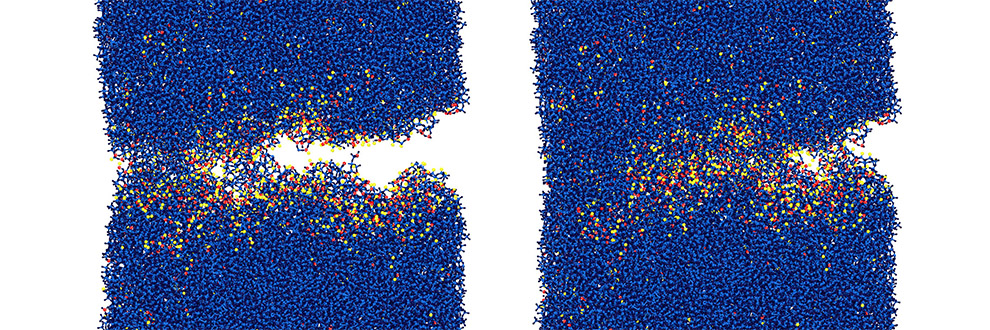
How glasses break
Glass represents the quintessential brittle material, shattering in pieces with little deformation. Yet at the nanoscale, silica glass becomes ductile and deforms plastically like metals. This behavior was observed experimentally in amorphous silica nanofibers, but its origin was unclear. Researchers at the Center for Complexity and Biosystems lead by Stefano Zapperi investigated the problem by extensive atomistic simulations. Their results, just published in Nano Letters, showed that the observed small sample size enhanced ductility is primarily due to diffuse damage accumulation. For larger samples, however, damage coalesce in extended cracks leading to brittle catastrophic failure. Surface effects such as boundary fluidization also contribute to ductility at room temperature by promoting necking, but are not the main driver of the transition. Understanding the brittle to ductile transition in glasses is important to better control the mechanical properties of glass nanofibers for a variety of applications.
Paper reference
Damage Accumulation in Silica Glass Nanofibers
Silvia Bonfanti, Ezequiel E. Ferrero, Alessandro L. Sellerio, Roberto Guerra, and Stefano Zapperi
Nano Letters Article ASAP
DOI: 10.1021/acs.nanolett.8b00469
pubs.acs.org
